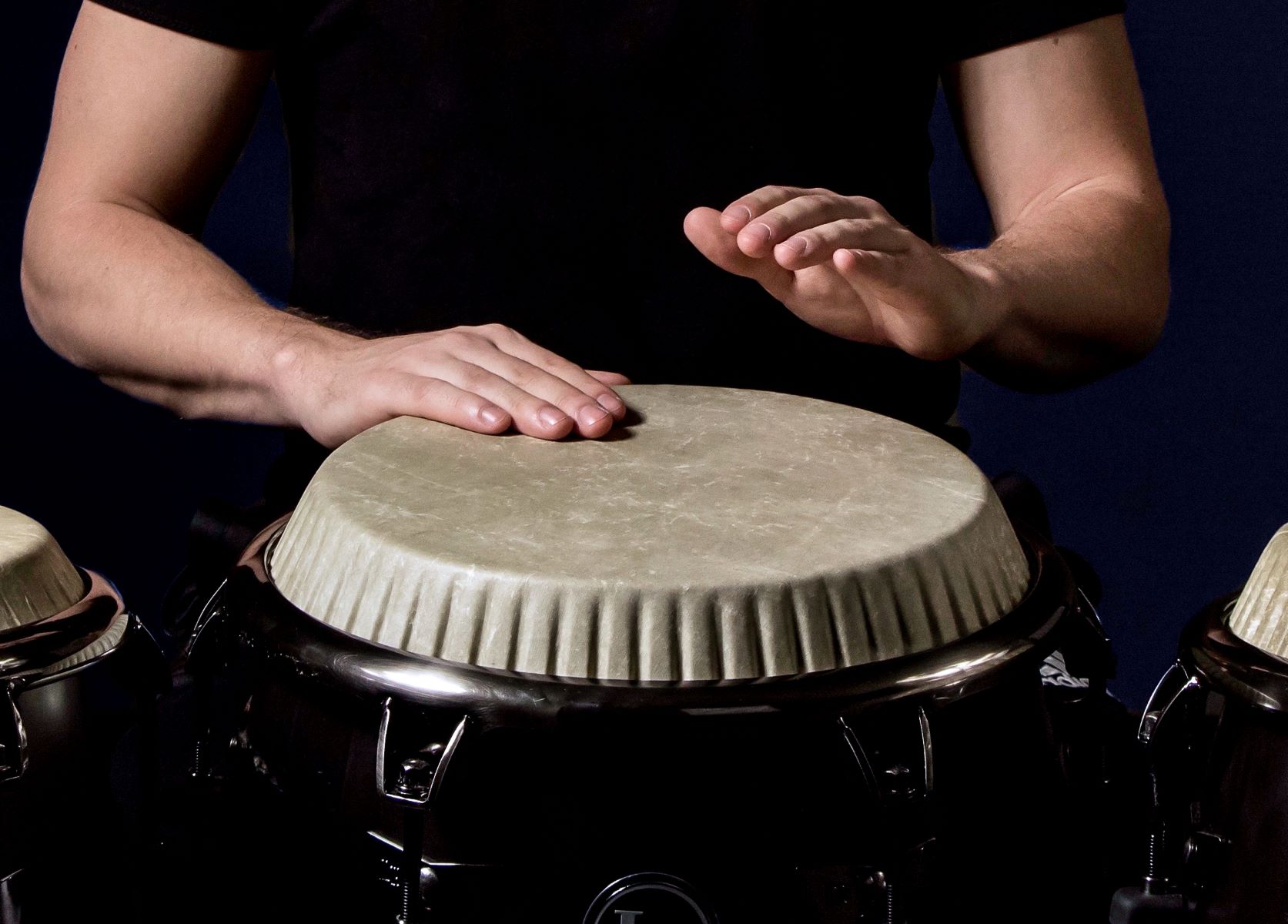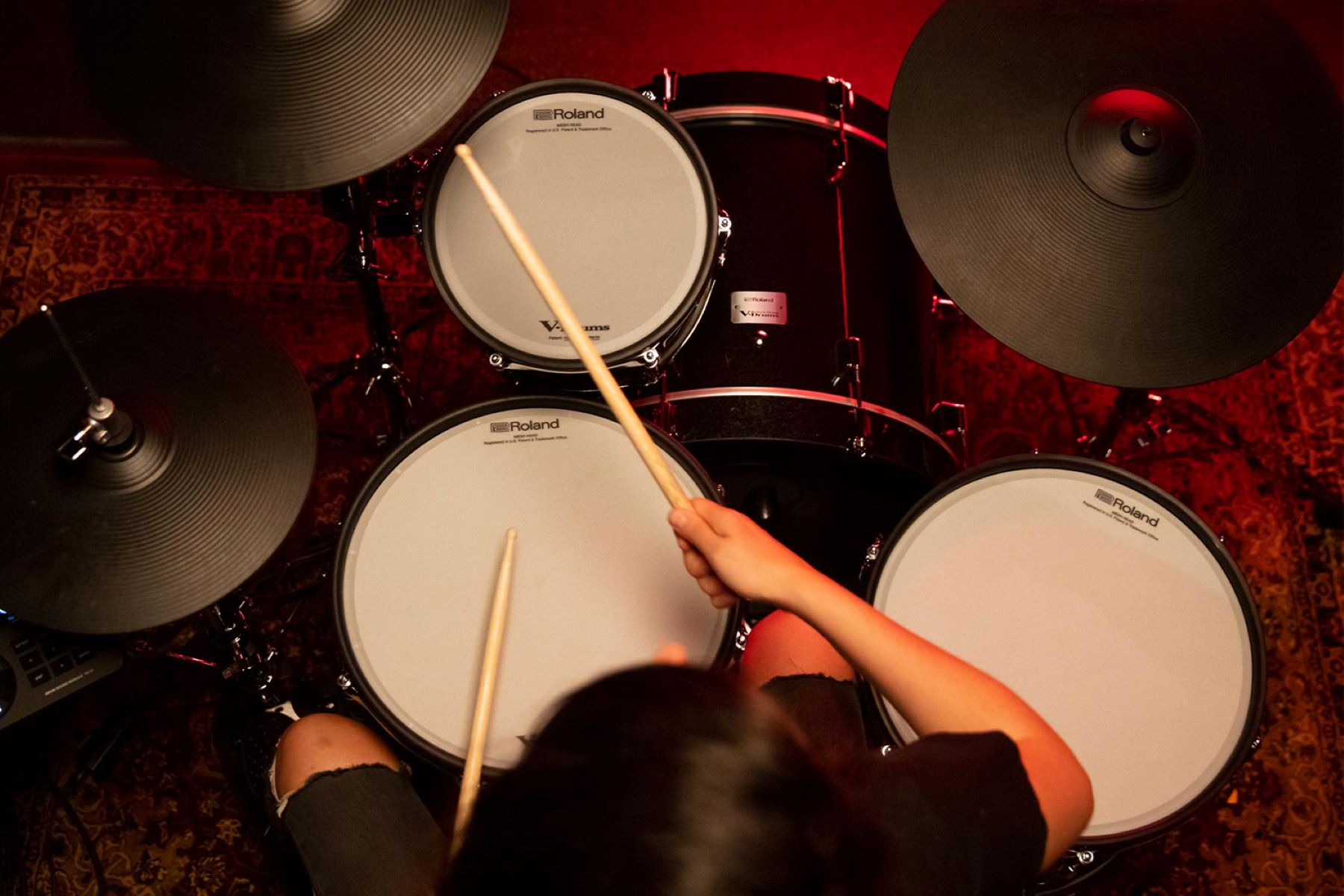

Jazz
How To Play Jazz On Drums
Modified: January 22, 2024
Learn how to play jazz on drums with our comprehensive guide. Develop your rhythm and technique to master this unique and vibrant genre.
(Many of the links in this article redirect to a specific reviewed product. Your purchase of these products through affiliate links helps to generate commission for AudioLover.com, at no extra cost. Learn more)
Table of Contents
Introduction
Welcome to the world of jazz drumming, where rhythm takes center stage and creativity knows no bounds. Whether you’re a seasoned drummer looking to expand your musical horizons or a beginner eager to dive into the genre, this article will guide you through the essentials of playing jazz on drums.
Jazz is a genre that encompasses a rich and diverse range of musical styles, from traditional swing to modern fusion. It’s a genre that thrives on improvisation, syncopation, and the interaction between musicians. As a jazz drummer, you have the important task of setting the rhythmic foundation, driving the band forward, and creating exciting musical moments.
Playing jazz on drums requires a unique set of skills and techniques that differ from other styles of drumming. It’s all about groove, feel, and expressing yourself within the musical context. In this article, we will explore the equipment needed, basic jazz drumming techniques, and ways to develop your improvisation skills.
So, grab your drumsticks, find a comfortable seat behind the drum kit, and get ready to embark on a rhythmic journey through the captivating world of jazz drumming.
Equipment Needed
When it comes to playing jazz on drums, having the right equipment is essential. Here are the key components you’ll need to create the classic jazz drumming sound:
- Drum Kit: Start with a traditional acoustic drum kit. While electronic drums can be used, there’s nothing quite like the authentic sound and feel of acoustic drums for jazz. A typical jazz drum kit includes a bass drum, snare drum, tom-toms, hi-hat cymbals, ride cymbal, and crash cymbal.
- Cymbals: Invest in high-quality cymbals that produce a warm and shimmering tone. Look for a ride cymbal with a balanced stick definition and a crash cymbal with a quick decay. Jazz drummers often prefer lighter and thinner cymbals for their responsiveness and articulate sound.
- Drumheads: Choose drumheads that provide a warm and focused sound. Coated heads are commonly used for snare drums as they offer a slightly darker tone. Coated or clear heads can be used for the toms, depending on your preference.
- Hardware: Make sure your drum kit is supported by sturdy and reliable hardware. This includes the bass drum pedal, snare stand, hi-hat stand, cymbal stands, and a drum throne.
- Drumsticks: Select drumsticks that are suitable for jazz playing. Jazz drummers often prefer sticks with a lighter weight and a smaller tip to achieve a more delicate and nuanced sound.
Remember, the gear you choose should complement your personal style and preferences. Experiment with different setups and configurations to find the sound that resonates with you and enhances your jazz drumming experience.
Basic Jazz Drumming Techniques
Playing jazz on drums requires a solid foundation of techniques that allow you to navigate the intricate rhythms and dynamics of the music. Here are some essential techniques to get you started:
- Brush Playing: Brushes are a staple of jazz drumming, creating a softer and more subtle sound. Practice brushing the snare drum or cymbals with a circular motion to produce a smooth and controlled sound.
- Ride Cymbal Patterns: The ride cymbal often acts as the timekeeper in jazz music. Experiment with various ride cymbal patterns such as the traditional ride pattern (1-2-3-4) or the jazz ride pattern (ride-cymbal-ride-bell).
- Hi-Hat Techniques: The hi-hat is a versatile and expressive part of jazz drumming. Master the art of opening and closing the hi-hat with the foot pedal to create different dynamics and accents.
- Ghost Notes: Ghost notes are soft and subtle notes played on the snare drum. Practice incorporating ghost notes within your grooves to add depth and texture to your playing.
- Latin Rhythms: Jazz often incorporates elements of Latin music. Familiarize yourself with Latin rhythms such as the bossa nova, samba, or clave patterns, as they can add a unique flavor to your jazz drumming.
Remember to start slowly and focus on accuracy and precision. Mastering these basic jazz drumming techniques will provide you with a strong foundation and open the doors to more advanced and intricate playing styles.
Understanding Swing
Swing is a defining characteristic of jazz music, and as a jazz drummer, it’s crucial to understand and master the concept of swing. Swing refers to the rhythmic feel and groove that gives jazz its distinct and infectious swing. Here are some key aspects to consider:
Rhythmic Subdivision: In swing music, the eighth notes are often played with a triplet feel, creating a sense of syncopation. This means that instead of playing evenly spaced eighth notes, you’ll divide them into “long-short” pairs, with the first note of the pair being slightly longer and the second note slightly shorter.
Ride Cymbal Technique: The ride cymbal plays a crucial role in establishing the swing feel. Focus on maintaining a consistent and steady ride pattern while accentuating the “long-short” subdivision. Experiment with different ride cymbal patterns to find the groove that best fits the music.
Accents and Dynamics: Jazz drumming thrives on accents and dynamics. Emphasize certain beats by hitting the drums or cymbals with slightly more force, and use dynamics to create contrast within your playing. This adds depth and excitement to your performance.
Call and Response: Jazz is a highly interactive genre, and call and response is a common improvisational technique used by musicians. As a drummer, listen to the soloists and other members of the band, and respond with complementary rhythmic patterns or accents. This creates a musical conversation and enhances the improvisational aspect of jazz.
Understanding swing is not just about playing the right rhythms; it’s about feeling the groove, internalizing the rhythmic flow, and embracing the sense of swing as an integral part of your drumming style. Take the time to listen to recordings of jazz greats who are known for their swing feel, and strive to capture that essence in your own playing.
Syncopation and Off-Beat Accents
Syncopation and off-beat accents are essential elements of jazz drumming that add complexity and excitement to your playing. They give jazz music its distinctive rhythmic character. Here’s a closer look at these techniques:
Syncopation: Syncopation refers to emphasizing the off-beats or unexpected accents in a rhythmic pattern. In jazz drumming, you’ll often find syncopated rhythms that create a sense of surprise and unpredictability. Work on incorporating syncopated patterns into your grooves by placing accents on the “and” or the “e” of the beat.
Off-Beat Accents: Off-beat accents involve playing accents on beats other than the strong beats (usually beats 2 and 4 in jazz music). By placing accents on beats 1 and 3 or other parts of the measure, you can create interesting rhythmic tension and drive. Experiment with accenting different parts of the measure to add variation and creativity to your playing.
Sixteenth-Note Patterns: Jazz drumming often involves intricate sixteenth-note patterns that incorporate syncopation and off-beat accents. Practice playing various combinations of sixteenth-note patterns, experimenting with different accents and off-beat placements. This will enhance your rhythmic dexterity and give you more creative options during improvisation.
Interaction with Other Musicians: Jazz is a collaborative art form, and as a drummer, your syncopation and off-beat accents should complement and interact with the other musicians in the group. Listen closely to the melodic and harmonic elements played by the other instruments, and respond with rhythmic accents and patterns that enhance the overall musical conversation.
Syncopation and off-beat accents are powerful tools that allow you to break away from predictable rhythms and create captivating grooves. As with any technique, practice them slowly and gradually increase the tempo as you gain proficiency. Develop your sense of timing and feel for syncopation by playing with recordings and other musicians. This will help you internalize these techniques and apply them naturally in your jazz drumming.
Developing Your Improvisation Skills
Improvisation is at the heart of jazz music, allowing musicians to express their creativity and engage in spontaneous musical conversations. As a jazz drummer, developing strong improvisation skills is essential for your musical growth and ability to contribute to the overall improvisational nature of the music. Here are some tips to help you enhance your improvisation skills:
- Ear Training: Train your ears to recognize melodic and harmonic patterns. Listen to jazz recordings and transcribe solos played by other musicians. Pay attention to the phrasing, note choices, and overall musical structure. This will enable you to better understand the language of jazz and incorporate melodic ideas into your drumming.
- Rhythmic Vocabulary: Build a diverse rhythmic vocabulary by studying the rhythms and patterns used by jazz drummers. Practice different grooves, fills, and rhythmic variations to expand your repertoire. The more rhythmic options you have at your disposal, the more creatively you can improvise during performances.
- Call and Response: Use call and response techniques to engage in musical conversations with other band members. Respond to melodic or rhythmic ideas presented by the soloists or other instruments. This interactive approach creates a sense of cohesion and spontaneity in the music.
- Transcribe Drum Solos: Transcribe drum solos from jazz recordings to analyze and learn from the masters. Pay attention to the dynamics, ghost notes, accents, and overall feel of the solos. This will not only help you improve your technical skills but also expose you to different improvisational ideas and concepts.
- Practice with Metronome and Play-Along Tracks: Develop your sense of time and groove by practicing with a metronome and play-along tracks. Start with simple rhythms and gradually add more complexity. This will improve your ability to navigate different tempos and maintain a steady pulse during improvisation.
Remember, improvisation is an ongoing process that requires dedication and active listening. Be patient with yourself and allow yourself to make mistakes. Embrace the spontaneity and freedom that comes with improvising, and let your musical instincts guide you. With consistent practice and an open mindset, your improvisation skills as a jazz drummer will continue to grow and flourish.
Transcribing and Studying Jazz Drumming Legends
If you want to truly immerse yourself in the world of jazz drumming, one of the most effective ways to learn and grow is by transcribing and studying the performances of jazz drumming legends. Here’s why it’s important and how you can make the most of this practice:
Understanding Their Style: Transcribing the drum solos and performances of jazz drumming legends gives you a deeper insight into their unique style and approach to the instrument. Pay attention to their phrasing, dynamics, use of accents, syncopation, and overall musicality. This knowledge will inform and inspire your own playing.
Expanding Your Vocabulary: By transcribing and analyzing the drumming of jazz legends, you’ll discover new rhythms, fills, and techniques that you can incorporate into your own playing. It expands your rhythmic vocabulary and gives you a wider range of tools to express yourself during improvisation.
Developing Your Listening Skills: Transcribing allows you to train your ears to pick up subtleties and nuances in the music. It sharpens your listening skills, helping you identify rhythmic patterns, improvisational ideas, and musical interactions within the band. This heightened listening ability will greatly enhance your overall drumming skills.
Gaining Historical Context: Studying the drumming of jazz legends provides you with valuable historical context. You’ll gain a deeper appreciation for the evolution of jazz drumming, from the early pioneers to the modern masters. It gives you a sense of the lineage in which you are a part of as a jazz drummer.
Tips for Transcribing:
- Start with shorter phrases or solos and gradually work your way up to longer pieces.
- Use a software or slow down playback for more accurate transcription.
- Transcribe not only the drum parts but also other instruments to understand the full musical context.
- Take note of the dynamics, accents, and subtle variations in the performance.
Remember, while it’s important to transcribe and study jazz drumming legends, it’s equally important to incorporate your own style and creativity. Use what you learned as a foundation to develop your unique voice and approach as a jazz drummer. Transcribing and studying the masters is a lifelong journey that will continually inspire and inform your musical growth.
Playing in a Jazz Ensemble
Playing in a jazz ensemble is a thrilling and collaborative experience that allows you to showcase your skills as a jazz drummer within a musical group. Here are some tips to help you navigate the dynamics and responsibilities of playing in a jazz ensemble:
Listening and Communication: Jazz is all about active listening and interacting with other musicians. Pay close attention to the melody, harmony, and rhythm created by the other instruments. Adapt your drumming to support and enhance the overall musical conversation, utilizing dynamics, accents, and rhythmic variations to complement the moment.
Support the Soloists: The role of the drummer in a jazz ensemble is not only to keep time but also to support and inspire the soloists. Listen for their melodic or rhythmic ideas and respond with well-placed fills or accents. Create a solid foundation for their improvisations by playing supportive and creative rhythms.
Understanding Song Forms: Familiarize yourself with common jazz song forms such as the blues, AABA, or modal structures. Learn to recognize the different sections of a song and the accompanying drumming patterns that suit each section. This knowledge will enable you to navigate through the music effortlessly and contribute to its overall flow.
Embrace Dynamics and Groove: Jazz thrives on dynamics, so be mindful of your playing volume. Experiment with soft brushwork, delicate cymbal accents, and controlled dynamics to create a dynamic range that adds depth and expression to the music. Focus on maintaining a strong groove that keeps the ensemble together and propels the music forward.
Stay Open to Direction: When playing in a jazz ensemble, you may receive direction from the bandleader or other members regarding tempo, dynamics, or improvisational cues. Be open-minded and flexible, ready to adapt your playing to meet the collective vision of the group. This collaborative approach enriches the musical experience for everyone involved.
Remember, playing in a jazz ensemble is an opportunity to showcase your individuality while serving the collective musical vision. Embrace teamwork, active listening, and creativity to create a cohesive and captivating performance that embodies the essence of jazz.
Conclusion
Congratulations! You’ve now gained a better understanding of the world of jazz drumming. From the essential equipment needed to the techniques that define the genre, you’re well on your way to becoming a skilled jazz drummer.
By delving into the concepts of swing, syncopation, and off-beat accents, you have discovered the rhythmic intricacies that make jazz music so captivating. Developing your improvisation skills and studying the performances of jazz drumming legends will take your playing to new heights, expanding your vocabulary and giving you the tools to express yourself creatively.
Playing in a jazz ensemble allows you to collaborate with other musicians, engaging in musical conversations that drive the music forward. Remember, the key is active listening and communication, supporting the soloists and understanding the song forms to create a cohesive and dynamic performance.
As you continue on your jazz drumming journey, always stay curious and eager to learn. Embrace the richness and diversity of jazz music, explore different styles and sub-genres, and seek opportunities to perform and share your passion with others.
So, grab your drumsticks and unleash your creativity as you immerse yourself in the world of jazz drumming. Let your rhythm flow, your swing groove, and your improvisation soar. Jazz is a constantly evolving art form, and with your dedication and passion, you’ll be an integral part of its vibrant legacy.











